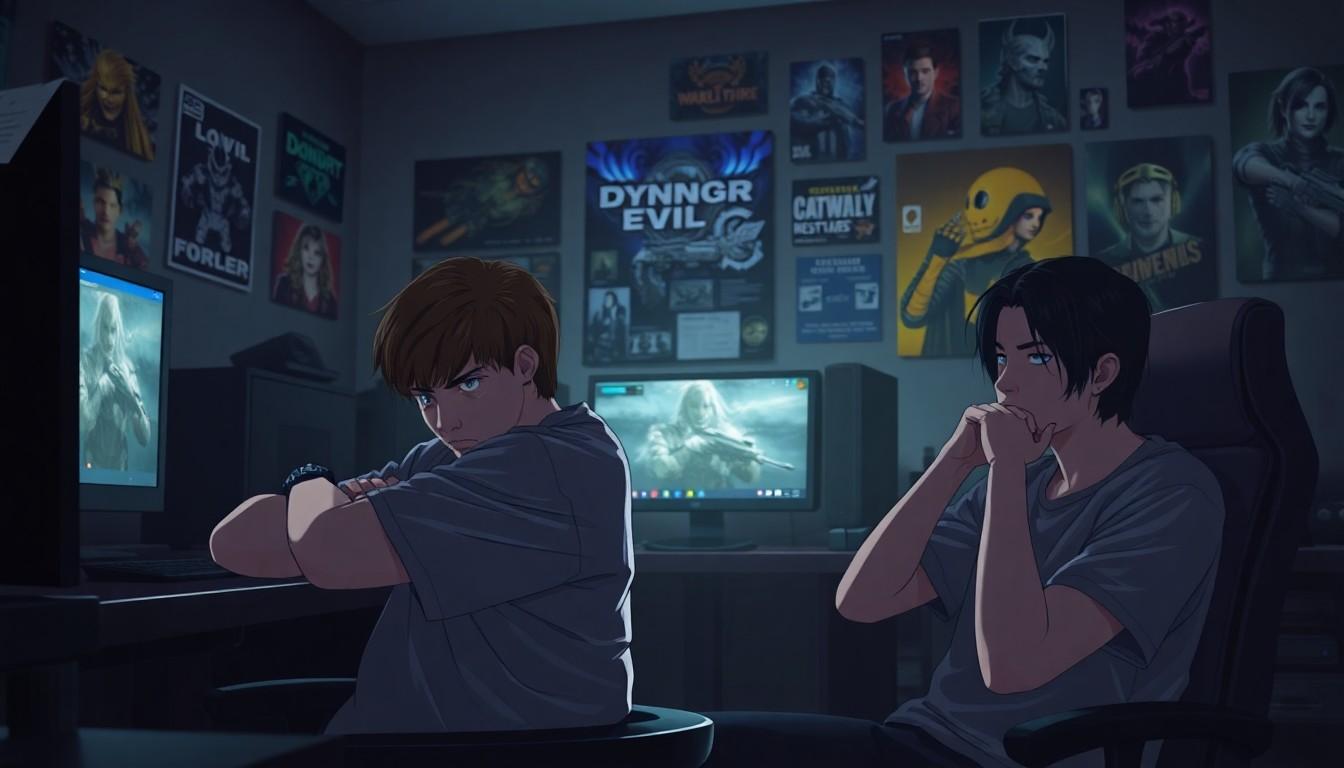
Why Game PC Dying Evil TD7 is Dying: Uncover the Shocking Decline
In a world where gaming PCs reign supreme, the saga of Dying Evil TD7 has taken a surprising turn. Once a beloved title that kept players glued to their screens, it now finds itself gasping for breath like a character caught in a zombie apocalypse. What happened? Did the game forget to eat its vegetables or simply fall victim to the relentless march of technology?
Overview of Dyingevil TD7
Dyingevil TD7 once enjoyed a strong player base and received positive reviews. The game’s unique blend of tower defense mechanics and horror themes attracted many fans. Players appreciated the engaging gameplay and stunning graphics, which made Dyingevil TD7 stand out in the market.
However, issues arose as new games emerged, offering enhanced visuals and innovative features. Competition intensified, making it difficult for Dyingevil TD7 to retain its audience. Players began to migrate to newer titles that provided a more immersive gaming experience.
Technological advancements also played a significant role in its decline. Many gaming PCs now support higher resolutions and frame rates, yet Dyingevil TD7 struggled to optimize these features effectively. A lack of regular updates and new content further alienated the game’s community, contributing to dwindling interest.
Community engagement is essential in today’s gaming environment. Without effective communication and a responsive development team, Dyingevil TD7 missed opportunities to maintain player loyalty. Additionally, social media platforms serve as primary marketing channels. Dyingevil TD7’s absence on popular streaming sites diminished its visibility.
Market trends indicate a shift toward multiplayer and constantly evolving game formats. Dyingevil TD7’s static gameplay may not cater to these trends, limiting its appeal. Failure to adapt to these changing expectations has resulted in a critical decline in player retention.
Factors Contributing to the Decline

The decline of Dying Evil TD7 stems from several key factors affecting its popularity in the gaming community.
Decreased Player Base
Losing players plays a significant role in the game’s decline. Once a thriving title, Dying Evil TD7 has seen its player base dwindle over the years. Competitive games tend to attract attention, especially those featuring multiplayer elements. As new titles emerge, players gravitate towards options offering interactive and social experiences. The once-vibrant community around Dying Evil TD7 no longer finds the same level of engagement, which diminishes the overall enjoyment of the game. Fading player interest has led to empty servers and a lack of online presence, making it challenging for newcomers to join the remaining fanbase.
Limitations of Hardware Requirements
Evolving technology has left Dying Evil TD7 struggling to keep pace with modern hardware requirements. Many players now opt for high-performance gaming setups that demand superior visuals and frame rates. Unfortunately, the game hasn’t optimized for these advancements, causing frustration among players expecting seamless gameplay. Incompatibility with the latest graphics cards and CPUs has severely limited its accessibility. Players with newer systems often experience performance issues, which drive them to explore alternatives. With such limitations, the gap between Dying Evil TD7 and newer, technologically advanced titles continues to widen.
Competition from Other Games
Dying Evil TD7 faces stiff competition from various new game genres and mobile gaming popularity. These factors significantly impact its player base and overall engagement.
Rise of New Game Genres
Emerging genres like battle royale and survival games attract players seeking dynamic experiences. Titles such as Fortnite and Apex Legends dominate the market with constantly evolving gameplay. Players are drawn toward games that offer multi-faceted interactions, PvP opportunities, and frequent updates. Developers of newer games prioritize player feedback, effectively enhancing player satisfaction. In contrast, Dying Evil TD7’s tower defense mechanics feel static and less appealing in a landscape filled with rapid-action games. Players, craving novelty, often gravitate toward these innovative options, ultimately leading to a decline in Dying Evil TD7’s appeal.
Popularity of Mobile Gaming
Mobile gaming continues to rise in popularity, drawing attention away from traditional PC games. The accessibility of games on smartphones attracts casual gamers who prefer quick, on-the-go gameplay. Titles like PUBG Mobile and Genshin Impact capitalize on this trend, offering engaging experiences without the need for high-end hardware. Many gamers opt for the convenience of mobile platforms, resulting in decreased interest in PC games like Dying Evil TD7. These trends highlight a significant shift in gaming preferences, further contributing to Dying Evil TD7’s decline as players prioritize mobile-friendly options.
Gameplay and Design Issues
Dying Evil TD7 faces significant gameplay and design issues contributing to its decline. The lack of timely updates and adequate support undermines player engagement.
Lack of Updates and Support
Updates for Dying Evil TD7 have become infrequent, leaving players craving fresh content. Limited new features have not kept pace with community expectations. This stagnation resulted in diminishing player interest. Without regular patches, bugs persist, further frustrating the community. The absence of developer responsiveness creates feelings of neglect among players. Regular communication could re-establish trust and loyalty. Continued support from the development team remains crucial for revitalizing interest in the game.
User Feedback and Community Response
User feedback indicates disappointment regarding design choices and gameplay mechanics. Many players express frustration with the static nature of tower defense elements. The community has voiced its desire for more dynamic gameplay. Social media platforms often showcase complaints about lackluster features and updates. This negative sentiment fuels a wider trend of disengagement. Community interactions highlight the feeling of abandonment surrounding the game. Engaging discussions around innovative ideas could reignite enthusiasm and attract former players back to Dying Evil TD7.
Conclusion
The decline of Dying Evil TD7 underscores the rapidly evolving nature of the gaming industry. As players seek more immersive and interactive experiences, the game’s static mechanics and lack of updates have alienated its once-loyal community. Competing titles that offer dynamic gameplay and regular content updates have left Dying Evil TD7 struggling to maintain relevance.
With a dwindling player base and increased competition from mobile and multiplayer games, it’s clear that the game needs a significant overhaul to regain its footing. Without a commitment to innovation and player engagement, Dying Evil TD7 may continue to fade into obscurity, serving as a cautionary tale for developers about the importance of adaptation in a fast-paced market.
